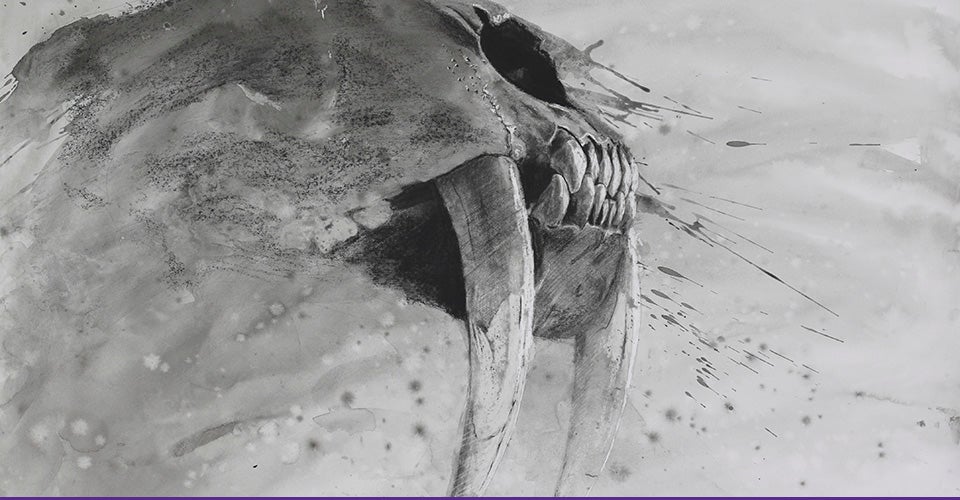QUICKENING IMAGE
ECU alumnus and collaborator bring new art technique to Greenville
East Carolina University School of Art and Design alumnus artist David Dodge Lewis (MA, ’81, MFA, ’87) and artist collaborator Ephraim Rubenstein will bring a radically new art technique to East Carolina University’s Wellington B. Gray Art Gallery for exhibition and discussion in January.
“The Quickening Image: The Wax-Resist Drawings of David Dodge Lewis and Ephraim Rubenstein / A Twenty Year Collaboration,” will be on exhibit in Gray Gallery from Jan. 21-Feb. 19, with a public artist talk in Speight Auditorium in the School of Art on Jan. 21 at 5 p.m.
Resist techniques in art use the incompatibility of two or more mediums to create layered effects with color or texture.
“The Quickening Image” exhibition features wax-resist drawing, a drawing technique developed and refined by Lewis and Rubenstein. Wax-resist drawing is a complexly-layered, large-scale technique that uses a wide variety of art media, and uses wax to repel subsequent ink and charcoal washes.
Lewis will conduct a workshop in the technique for ECU students during the exhibition.
Adapting the techniques of 20th century English sculptor Henry Moore who used wax as a resist for ink washes in his sketchbooks on a small scale, Lewis began using wax in large-scale works for exhibition in the mid-1980s. By the early 1990s, Lewis was offering workshops on his wax-resist process, including at the University of Richmond, where Rubenstein first observed it. With help from Lewis, Rubenstein spent the next 20 years adapting the process for his own art. “The Quickening Image” exhibition features each artist’s individual works as a result of their collaboration.
“For a number of years I thought of wax-resist drawing as just my personal choice of mixed-media materials — after all, most artists have particular tools, ingredients or approaches that they have embraced and altered to create their personal styles,” Lewis said. “As my drawings became better known, however, I was repeatedly asked to present workshops on my ‘process.’ This made me reflect upon my choice of materials, how they complemented one another, and how the result was not so much mixed-media as a specific process of its own.”
Lewis credits his experiences as a graduate student at ECU for piquing his interest in developing the new process.
“Faculty members like Paul Hartley had created an environment of high expectations combined with innovation and independence,” he said. “There was also a remarkable camaraderie among the graduate students, in part because critiques were design-based and did not pit one style against another. That let us share ideas and processes freely, and when I saw another grad student using wax in a drawing of hers, I tried it in my drawings.”
The ECU School of Art and Design faculty also inspired Lewis to a college teaching career.
“I enjoyed the student-faculty interactions at ECU and found myself wanting to teach at the college level, so I studied the classroom practice of the faculty,“ Lewis said. “It was my preparation at East Carolina University — and a lot of good luck — that gave me the confidence to step into a tenure-track position right out of graduate school, building a visual arts program from scratch at Hampden-Sydney College.”
Lewis is the Barger-Barclay Professor of Fine Arts at Hampden-Sydney College in Virginia. His work has been in over 100 national juried exhibitions and solo shows—winning many awards— and appears in many public and private collections.
Rubenstein is on the faculty of the Art Students League of New York and Columbia University. His work is widely exhibited and is represented in numerous public and private collections, including the Metropolitan Museum of Art, Exxon Corporation and Deloitte & Touche.
The exhibition tour and details of the wax-resist process were featured in the summer 2015 issue of Drawing Magazine.
For more information on Gray Gallery hours or exhibitions, call 252-328-1312.
